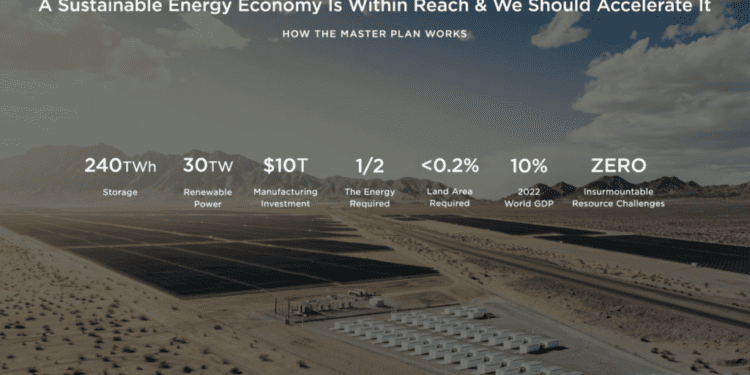Tesla had an Investor Day event at its gigafactory in Austin, TX, today. During this event, the company revealed its Secret Master Plan #3, which is focused on creating a fully sustainable energy future for Earth. This plan has been met with both excitement and skepticism, as many are wondering what it will bring to the table that hasn’t already been discussed.
The plan was outlined by Mark Z. Jacobson from Stanford University in California, and is in line with the Intergovernmental Panel on Climate Change (IPCC) and International Energy Agency (IEA) publications. Additionally, the Institute for Sustainable Futures at the University of Technology Sydney in Australia has its own “One Earth Climate Model” which could be used to further develop Tesla’s plan.
Tesla also discussed improvements in design and production, as well as transitioning to a complete ethernet IP-based system in the next-gen vehicle. They also announced plans to transition from 12V to 48V in the future, which is something all carmakers are considering.
The most promising part of the event was the battery production story. Tesla is now producing their 4680 cells in volume and is scaling up production in Austin and Nevada. They also discussed plans to install stationary energy storage all over the world and provide energy to their customers in Texas, entering the electricity utility business.
Finally, Tesla mentioned that the board was starting to talk about stock buybacks or dividend payments, showing that the company is becoming more mature. However, for those of us interested in future products and production of the company, there was not much news.
Overall, while Tesla’s Secret Master Plan #3 may not bring anything new to the table, it is still an exciting development that could help move us closer to a sustainable energy future. It will be interesting to see how this plan develops and what impact it will have on the industry.
FAQ
Q1. How electric car batteries work?
A1. Electric car batteries are typically lithium-ion batteries that store energy and power the motor. They are recharged by plugging the car into an electric outlet or charging station.
Q2. What electric car has the longest range?
A2. The Tesla Model S has the longest range of any electric car currently on the market, with a range of up to 370 miles on a single charge.
Q3. How electric car batteries are recycled?
A3. Electric car batteries are recycled by breaking them down into their component parts and then separating out the metals, plastics, and other materials for reuse. The metals are melted down and reused in new products, while the plastics and other materials are recycled into new products.








